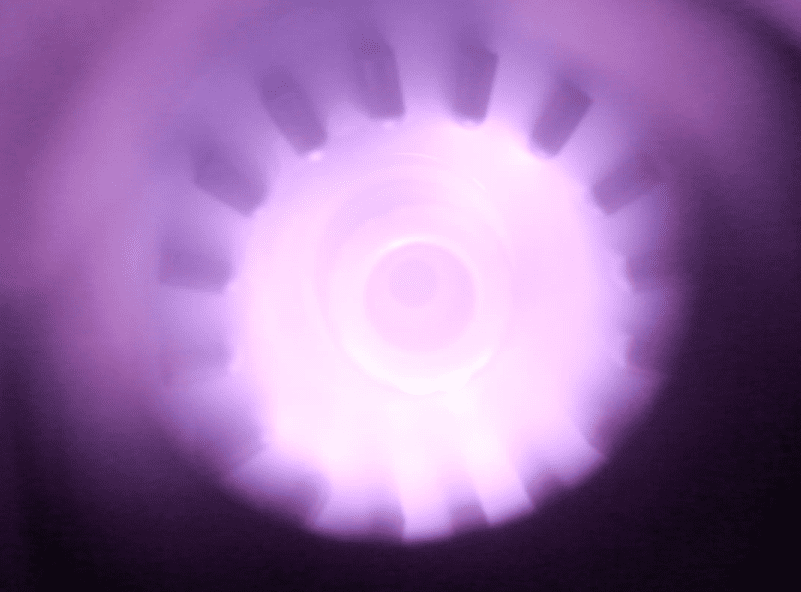Based on tests conducted in May, the LPPFusion research team decided that more microwave power was needed to clean the oxides off our tungsten electrodes. The oxides, which break up easily when heated, had been contributing impurities to the plasma and limiting fusion yield. We decided to mount two kW microwave magnetrons on a single large window to double the power. The larger window admitted the 12-cm-long waves far more efficiently than a smaller window used with the second magnetron in May. Combining the two magnetrons proved to be fairly difficult, because the two magnetrons, working independently, could cancel out each other’s waves.
First Dr. Hassan made a copper, v-shaped combiner to couple the two magnetrons. Then, based on that experience and papers published by other groups, the team designed an aluminum coupler with a “trombone tuner” that could adjust the coupling of the waves between the two magnetrons. That combiner, fabricated at local shops, worked well and nearly doubled total power output. After some experimentation, the team was able to use the combiner to create more intense plasma heating (Fig.3). The heating was shifted into the space between the electrodes, where it was needed for oxide cleaning. Spectra from the glowing plasma confirmed that the temperature of the plasma was much higher, almost certainly above the target of 20,000 K.
Figure 3. Microwave heating is more intense and centered on the electrodes with two magnetrons on one large window (right) than with two magnetrons on opposite windows (left).
However, so far the most intense plasma heating has proven to be somewhat unstable and hard to replicate exactly. In addition, testing so far has not shown the needed reduction in oxides. The team is continuing testing and intends to wind up these experiments in September, so as to shift focus to the upcoming beryllium experiments. Since beryllium itself will contribute little to harmful impurities, (see Beryllium Cathode Arrives) the oxide problems will not be important with the beryllium electrodes.


